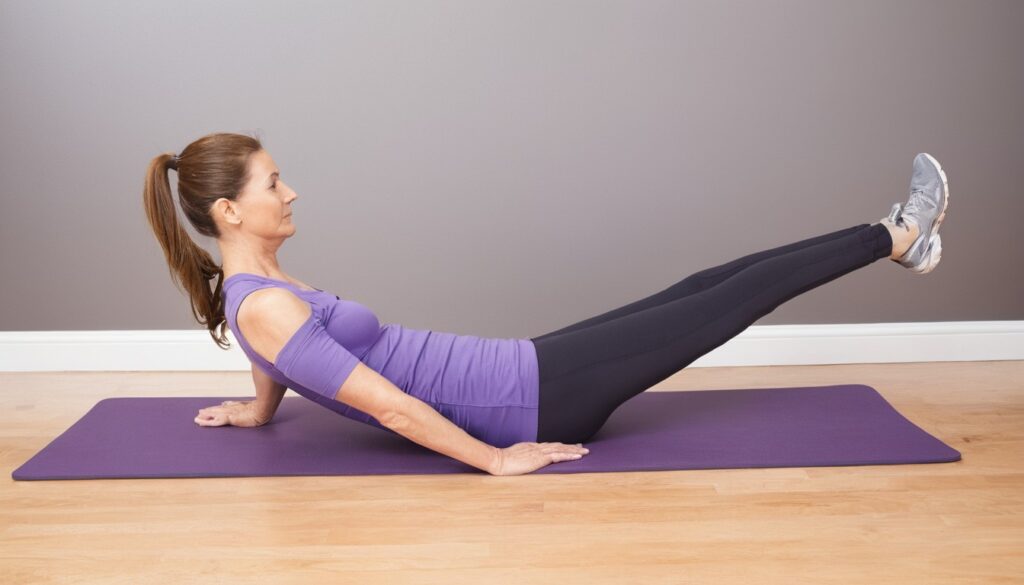Diverticulitis stems from diverticulosis, a common condition where small pouches develop in the colon lining. These pouches may not cause issues initially, but when they become inflamed or infected, it results in diverticulitis. The exact cause of diverticulitis is not fully understood, but factors like age, diet low in fiber, and lack of physical activity are believed to contribute.
Importance of Exercise in Supporting Overall Health
Exercise is a cornerstone of overall health, playing a crucial role in maintaining the well-being of our bodies. It contributes to cardiovascular health, weight management, and mental well-being. For individuals dealing with diverticulitis, incorporating regular exercise into their routine can be a game-changer.
Physical activity enhances blood circulation, promotes efficient digestion, and supports the immune system. These benefits are especially relevant for diverticulitis patients, as a healthy immune system and optimal digestion are integral to managing the condition.
Balancing Exercise with Diverticulitis Management
While exercise is generally beneficial, finding the right balance is key for diverticulitis patients. Rigorous activities may exacerbate symptoms, so it’s crucial to tailor the exercise routine to individual needs. Consulting with a healthcare professional is vital to assess the severity of the condition and determine suitable exercises.
The goal is to engage in activities that promote overall health without triggering diverticulitis symptoms. This may involve a combination of aerobic exercises, strength training, and flexibility routines. Striking the right balance ensures that individuals with diverticulitis can enjoy the benefits of exercise without compromising their health.
As we delve deeper into understanding diverticulitis and its relationship with exercise, it becomes evident that a nuanced approach is necessary. Let’s explore the specifics of diverticulitis, the advantages of exercise, and how to harmonize these elements for optimal health.

Understanding Diverticulitis: Navigating the Pouches
Diverticulitis, an inflammatory condition affecting the digestive system, arises from diverticula—small, bulging pouches that can form in the lining of the lower intestine, particularly the colon. These pouches, when inflamed or infected, give rise to diverticulitis. While the exact cause remains elusive, several contributing factors have been identified.
Low-fiber diets are often implicated in the development of diverticulosis, the precursor to diverticulitis. A lack of fiber can lead to increased pressure within the colon during bowel movements, facilitating the formation of pouches. Age is another significant factor, with diverticulitis becoming more prevalent in individuals over 40. Genetics, obesity, and a sedentary lifestyle also play roles in increasing susceptibility.
Understanding the symptoms of diverticulitis is crucial for timely diagnosis and management. The most prevalent sign is abdominal pain, typically on the left side, accompanied by tenderness. This pain may escalate and become persistent. Other symptoms include changes in bowel habits, ranging from diarrhea to constipation, bloating, and, in severe cases, fever and chills.
It’s important to note that symptoms can vary, and some individuals may experience only mild discomfort. However, any persistent abdominal pain or unusual bowel changes should prompt a medical evaluation to rule out or confirm diverticulitis.
The impact of diverticulitis on daily life extends beyond the physical symptoms. Individuals with diverticulitis may experience anxiety and stress due to the unpredictable nature of the condition. Fear of triggering an episode may influence lifestyle choices, leading to social withdrawal or avoidance of certain activities.
Dietary restrictions, often advised to manage diverticulitis, can also affect daily life. The need for increased fiber intake and avoidance of certain foods may require careful meal planning. Additionally, concerns about the potential for flare-ups may lead to hesitancy in engaging in physical activities, contributing to a sedentary lifestyle.
As we delve into the intricacies of diverticulitis, it becomes apparent that beyond its physical manifestations, the condition can impact various aspects of daily life. In the next sections, we’ll explore how exercise can be incorporated to alleviate symptoms and improve overall well-being.
Role of Exercise in Diverticulitis Management: Empowering Wellness
A. Benefits of Regular Exercise
Engaging in regular exercise proves to be a powerful ally in managing diverticulitis, offering a multitude of benefits that extend beyond physical fitness.
1. Improved Bowel Function
Exercise stimulates the muscles of the digestive tract, promoting regular bowel movements. For individuals with diverticulitis, this can be particularly beneficial. The increased muscular activity helps move stool through the colon more efficiently, reducing the risk of constipation—a common concern for those with the condition.
Moreover, exercise aids in maintaining a healthy weight, which is crucial for diverticulitis management. Obesity is a risk factor for diverticulitis, and regular physical activity contributes to weight control, further supporting optimal bowel function.
2. Enhanced Immune System
A robust immune system is essential for diverticulitis patients, as it helps fend off infections and supports overall health. Regular exercise has been linked to immune system enhancement. Moderate exercise, such as brisk walking or cycling, has been shown to promote the circulation of immune cells, reducing the risk of infections and inflammation.
This immune-boosting effect is particularly valuable for diverticulitis patients, who may be more susceptible to infections in the inflamed pouches. By incorporating exercise into their routine, individuals can fortify their immune defenses and contribute to a healthier, more resilient body.
3. Stress Reduction
Stress management is a key component of diverticulitis care. Stress can exacerbate symptoms and trigger flare-ups. Exercise, especially activities like yoga, meditation, or aerobic exercise, serves as a potent stress reducer.
Physical activity stimulates the release of endorphins, the body’s natural mood elevators, promoting a sense of well-being and relaxation. By integrating stress-reducing exercises into their routine, diverticulitis patients can create a positive impact on both their mental and physical health.
Understanding these benefits underscores the importance of making exercise a central component of diverticulitis management. In the subsequent sections, we’ll delve into specific exercises suitable for diverticulitis patients and essential considerations to ensure a tailored and effective fitness routine.
Types of Exercises Suitable for Diverticulitis Patients: Tailoring Fitness for Wellness
Low-Impact Activities
For diverticulitis patients, low-impact activities stand out as excellent choices for promoting cardiovascular health without putting excessive strain on the digestive system. Walking, swimming, and cycling are prime examples of low-impact exercises that gently elevate the heart rate without causing undue stress on the abdomen.
These activities not only contribute to improved cardiovascular fitness but also aid in weight management, a crucial aspect of diverticulitis care. Moreover, the rhythmic motion of low-impact exercises can have a positive impact on bowel function, helping to regulate digestion.
2. Strength Training
Incorporating strength training into the exercise routine offers numerous benefits for diverticulitis patients. While it may involve lifting weights or resistance exercises, it doesn’t necessarily require heavy lifting. Bodyweight exercises, resistance bands, or light weights can be suitable options.
Strength training helps build and maintain muscle mass, which is essential for overall health. It also supports bone density, an aspect particularly relevant for older individuals who may be at an increased risk of osteoporosis. As diverticulitis can impact daily activities, maintaining muscle strength is vital for preserving functional independence.
3. Flexibility Exercises
Flexibility exercises, including stretching and yoga, play a crucial role in diverticulitis management. These activities promote suppleness in muscles and joints, enhancing overall mobility. For individuals with diverticulitis, incorporating flexibility exercises can aid in reducing the risk of muscle strain and discomfort.
Yoga, in particular, combines physical postures with breath control and meditation, offering a holistic approach to well-being. The mindful nature of yoga can also contribute to stress reduction, addressing a key component of diverticulitis care.
By tailoring the exercise routine to include a combination of low-impact activities, strength training, and flexibility exercises, diverticulitis patients can experience a comprehensive approach to fitness. In the following sections, we will explore considerations for implementing these exercises safely and effectively, ensuring that individuals can reap the maximum benefits from their fitness regimen.

Exercise Considerations for Diverticulitis Patients: Guiding the Fitness Journey
Importance of Consulting a Healthcare Professional
Before embarking on any exercise regimen, diverticulitis patients must prioritize consultation with a healthcare professional. The unique nature of diverticulitis necessitates an individualized approach to exercise, taking into account the severity of the condition, overall health, and any existing medical considerations.
Healthcare professionals, including gastroenterologists and fitness experts, can provide valuable insights and personalized recommendations. They can assess the patient’s current health status, identify any potential contraindications, and offer guidance on the most suitable types and intensity of exercises.
This collaborative approach ensures that the exercise plan aligns with the individual’s specific needs and minimizes the risk of exacerbating diverticulitis symptoms. It also allows for the incorporation of modifications based on the patient’s overall health profile.
Gradual Progression in Intensity
Diverticulitis patients should approach exercise with a mindset of gradual progression. Starting with low-impact activities and gradually increasing intensity allows the body to adapt without causing undue stress. This stepwise approach is particularly crucial for individuals who may have been relatively sedentary or are managing other health conditions.
Progression can be achieved by incrementally increasing the duration, frequency, or intensity of exercises. This gradual escalation minimizes the risk of strain on the digestive system, giving the body time to adjust and adapt to the new fitness routine.
Including rest days in the exercise schedule is equally important. Rest allows the body to recover, preventing overexertion and potential flare-ups. It’s a delicate balance between challenging the body to improve fitness and avoiding excessive strain that could negatively impact diverticulitis management.
Listening to Your Body’s Signals
One of the most crucial aspects of exercising with diverticulitis is developing a keen awareness of the body’s signals. Individuals should pay close attention to how their body responds during and after exercise. Any unusual pain, discomfort, or digestive symptoms should be promptly addressed.
If certain exercises consistently trigger discomfort or exacerbate diverticulitis symptoms, modifications may be necessary. This underscores the importance of a flexible and adaptable approach to fitness. Listening to the body’s signals allows individuals to make informed decisions about their exercise routine, promoting a sustainable and enjoyable fitness journey.
Nutrition and Diverticulitis: Nourishing a Healthy Gut
A well-thought-out diverticulitis diet plays a pivotal role in managing symptoms and promoting overall digestive health. The primary focus is on maintaining a diet rich in fiber, as this supports regular bowel movements and prevents constipation—a common concern for diverticulitis patients.
Fiber can be categorized into soluble and insoluble, both playing distinct roles in digestive health. Soluble fiber, found in foods like oats, beans, and fruits, dissolves in water and forms a gel-like substance, aiding in stool consistency. Insoluble fiber, found in whole grains, vegetables, and nuts, adds bulk to stool, facilitating its movement through the digestive tract.
In addition to fiber, staying adequately hydrated is essential. Fluids help soften stool, preventing constipation and easing the passage of waste through the intestines.
Impact of Nutrition on Symptom Management
Nutrition directly influences diverticulitis symptoms, and making informed dietary choices can alleviate discomfort and promote overall well-being. A diet that includes a variety of fruits, vegetables, whole grains, and lean proteins supports digestive health while minimizing the risk of flare-ups.
Certain foods, such as spicy or highly processed items, may exacerbate symptoms and should be consumed in moderation or avoided. Additionally, alcohol and caffeine intake should be monitored, as these substances can potentially irritate the digestive system.
Maintaining a food diary can help individuals identify specific triggers and tailor their diet accordingly. This proactive approach empowers diverticulitis patients to make personalized dietary choices that align with their unique needs and preferences.
Key Nutrients for Diverticulitis Patients
While an overall balanced diet is crucial, certain nutrients take center stage for diverticulitis patients.
Fiber: As previously mentioned, fiber is a cornerstone of diverticulitis management. It promotes regular bowel movements, prevents constipation, and contributes to overall digestive health. Including a variety of fiber-rich foods in daily meals ensures an adequate intake.
Probiotics: These beneficial bacteria support gut health by maintaining a balance of microorganisms in the digestive tract. Yogurt, kefir, and other fermented foods are excellent sources of probiotics.
Hydration: Drinking enough water is vital for diverticulitis patients. Proper hydration helps soften stool, easing its passage through the intestines and preventing constipation.
Omega-3 Fatty Acids: Found in fatty fish, flaxseeds, and walnuts, omega-3 fatty acids possess anti-inflammatory properties. Including these foods in the diet may contribute to managing inflammation associated with diverticulitis.
By understanding the pivotal role of nutrition in diverticulitis management, individuals can empower themselves to make informed dietary choices that support overall gut health. In the subsequent sections, we’ll explore the synergy between nutrition and exercise, providing a comprehensive guide for individuals seeking a balanced and holistic approach to diverticulitis care.

Finding the Right Balance: Harmonizing Exercise and Lifestyle for Diverticulitis Well-being
Integrating Exercise into a Diverticulitis-Friendly Lifestyle
Successfully managing diverticulitis involves more than just engaging in regular exercise; it requires integrating these activities seamlessly into one’s lifestyle. This integration ensures that exercise becomes a sustainable and enjoyable part of daily routines.
For diverticulitis patients, choosing activities that align with their preferences and lifestyle is key. Whether it’s a morning walk, an evening yoga session, or a weekend swim, finding enjoyable forms of exercise encourages consistency. Additionally, incorporating physical activity into daily tasks, such as taking the stairs or gardening, contributes to overall movement without disrupting daily life.
Creating a supportive environment at home or work can further enhance the integration of exercise into daily activities. This may involve setting up a designated workout space, having workout gear readily available, or scheduling exercise sessions into the daily calendar.
Creating a Personalized Exercise Plan
Every individual’s fitness journey is unique, and diverticulitis patients benefit significantly from a personalized exercise plan. This plan should take into account individual preferences, fitness levels, and any specific considerations related to diverticulitis.
Begin with a comprehensive assessment of current fitness levels and health status. This can be done in collaboration with a healthcare professional or fitness expert. Considerations such as age, existing medical conditions, and the severity of diverticulitis symptoms guide the formulation of a tailored exercise plan.
Incorporating a mix of low-impact activities, strength training, and flexibility exercises ensures a well-rounded approach to fitness. The plan should also outline the frequency, duration, and intensity of exercises, gradually progressing as fitness levels improve.
Flexibility is crucial in adapting the exercise plan to changing circumstances or symptom variations. Regular reassessment, perhaps in consultation with a healthcare professional, allows for necessary adjustments to accommodate the dynamic nature of diverticulitis management.
Importance of Consistency
Consistency is the cornerstone of any successful diverticulitis management plan. Regular exercise, coupled with a balanced diet, contributes to overall well-being and helps mitigate symptoms. Creating a routine that aligns with personal preferences and daily schedules enhances the likelihood of adherence.
Consistency extends beyond exercise to other aspects of diverticulitis care, including dietary choices, hydration, and stress management. Establishing healthy habits and incorporating them into daily life promotes a holistic and sustainable approach to diverticulitis well-being.
Understanding that progress may be gradual and that adjustments may be necessary along the way fosters a positive mindset. Celebrating small victories and staying committed to the overall health journey contributes to long-term success.
Sample Exercise Routine for Diverticulitis Patients: Nurturing Fitness and Well-being
Embarking on a sample exercise routine tailored for diverticulitis patients involves a thoughtful blend of warm-up exercises, cardiovascular activities, strength training, and cool-down stretches. This holistic approach addresses the diverse needs of individuals managing diverticulitis, promoting overall fitness while considering the specific challenges posed by the condition.
A. Warm-up Exercises
Joint Mobility Exercises:
- Gentle neck rotations
- Shoulder rolls
- Ankle circles
Cardiovascular Warm-up:
- 5–10 minutes of brisk walking or light cycling
Warm-up exercises prepare the body for more strenuous activities, increasing blood flow to muscles and enhancing flexibility. Diverticulitis patients benefit from these low-impact warm-up exercises, minimizing the risk of strain on the digestive system.
B. Cardiovascular Activities
Brisk Walking:
- Duration: 20–30 minutes
- Intensity: Moderate pace, maintaining conversation
- Frequency: 3–5 times per week
Cycling:
- Duration: 15–20 minutes
- Intensity: Moderate resistance, maintaining a steady pace
Cardiovascular activities contribute to improved cardiovascular health, weight management, and enhanced bowel function. For diverticulitis patients, choosing low-impact options like walking and cycling ensures cardiovascular benefits without compromising digestive well-being.
C. Strength Training Routine
Bodyweight Exercises:
- Squats: 2 sets of 12–15 repetitions
- Lunges: 2 sets of 12–15 repetitions per leg
- Push-ups: 2 sets of 10–12 repetitions
Resistance Band Exercises:
- Bicep curls: 2 sets of 12–15 repetitions
- Leg press: 2 sets of 12–15 repetitions
Strength training is integral for maintaining muscle mass and supporting overall health. Diverticulitis patients can start with bodyweight exercises and gradually incorporate resistance training, ensuring a balanced approach that aligns with their fitness level and health status.
D. Cool-down Stretches
Full-body Stretching Routine:
- Neck stretches
- Shoulder stretches
- Hamstring stretches
- Quadriceps stretches
- Calf stretches
Deep Breathing Exercises:
- 5–10 minutes of deep diaphragmatic breathing
Cool-down stretches promote flexibility, reduce muscle soreness, and enhance relaxation. For diverticulitis patients, incorporating deep breathing exercises provides an additional benefit by supporting stress reduction—a crucial element of overall well-being.
This sample exercise routine is a starting point, and individuals should tailor it based on their fitness levels, preferences, and any specific considerations related to diverticulitis. Consulting with a healthcare professional or fitness expert ensures that the routine aligns with individual needs and contributes to a positive and sustainable fitness journey. In the concluding section, we’ll summarize the key takeaways and encourage individuals to embrace a balanced and holistic approach to diverticulitis management.

Conclusion
As we conclude our exploration of exercise and diverticulitis management, it’s essential to recap the key insights, emphasize the importance of a holistic approach to health, and encourage readers to take proactive steps in their wellness journey.
Recap of the Importance of Exercise in Diverticulitis Management
Throughout this comprehensive guide, we’ve delved into the symbiotic relationship between exercise and diverticulitis management. Regular physical activity offers a myriad of benefits for individuals grappling with this condition:
Improved Bowel Function:
- Exercise stimulates the digestive tract, promoting regular bowel movements and reducing the risk of constipation.
Enhanced Immune System:
- Engaging in exercise contributes to a robust immune system, essential for diverticulitis patients to fend off infections and support overall health.
Stress Reduction:
- Physical activity, especially stress-reducing exercises like yoga, aids in mitigating stress, a known trigger for diverticulitis symptoms.
By incorporating a well-rounded exercise routine tailored to individual needs, diverticulitis patients can actively contribute to their overall well-being.
B. Encouragement for a Holistic Approach to Health
Holistic health involves addressing the interconnected aspects of physical, mental, and emotional well-being. In the context of diverticulitis management, embracing a holistic approach entails:
Balanced Nutrition:
- Adhering to a diverticulitis-friendly diet rich in fiber and essential nutrients, complementing the benefits of exercise.
Stress Management:
- Incorporating stress-reducing practices, such as mindfulness and relaxation techniques, to foster a positive mindset.
Consistency in Care:
- Establishing consistent habits, from regular exercise to mindful dietary choices, to create a sustainable and effective diverticulitis management routine.
Recognizing the interconnectedness of these elements empowers individuals to navigate the complexities of diverticulitis with a comprehensive and informed approach.

Nutrition Blogger
I am a Health/Wellness and Nutrition Blogger. Bringing you well-researched details on your nutrition and health information. I love Helping you enjoy good health with the right choice of food.
Disclaimer
The information provided on this page is intended for general informational purposes only and was gathered by research on general nutrition science and experiments. The content is not intended to be a substitute for your specific professional medical, nutritional, or fitness advice, diagnosis, or treatment.
Recent Posts
- 7 Surprising Reasons Why You Need a Balanced Diet Every Day as a Woman
- The Mediterranean Diet and Dementia: Protecting Brain Health
- Superfoods for Brain Health: Diet To Fight Dementia
- Nutritional Strategies for Managing Dementia Symptoms
- How To Recognize Early Signs and Symptoms of Dementia
- Managing Lewy Body Dementia: Understanding Symptoms and Nutrition
- Understanding Vascular Dementia: Causes, Symptoms, and Dietary Solutions
- Alzheimer’s Disease and The Right Diet: All You Need To Know
- Dementia vs. Normal Aging: Debunking Myths and Clarifying Realities
- What are The Risk Factors for Dementia?
- Dementia And Omega 3 Fatty Acid ( Eicosapentaenoic acid )
- The Role of Nutrition in Dementia Prevention
- Dementia: An Introduction to the Condition and Management
- Okra Extract Supplements: A Nutrient-Rich Addition to Your Wellness Routine
- Okra and Eye Health: Okra and Vitamin A for Clear Vision
- Fuel Your Fitness: Okra’s Role in Sustaining Energy and Enhancing Muscle Recovery
- Age Gracefully with Okra: Supporting Joint Health in the Elderly
- Slim Down with Okra: Low-Calorie Smoothie Recipes
- Why Okra is a Must-Have for Pregnant Mom: The Folate Advantage
- DIY Beauty: Okra-Based Face Masks for Radiant Skin
- Boosting Milk Supply: The Okra Advantage for Nursing Moms
- Boost Your Child’s Growth with Okra: A Nutrient-Packed Superfood
- How Okra Supports Cycle Regularity: The Menstrual Miracle
- Boosting Testosterone Naturally: The Role of Okra in Men’s Health
- Detox Delight: How Okra Supports Your Body’s Natural Cleansing Process
- How Okra Fights Cancer: Okra and Cancer Prevention
- Explore 10 Health Benefits Of Garlic: A Comprehensive Guide
- Health Benefits of Garlic for Fighting Cough and Cold Infections
- Can Garlic Be Used As a Natural Antibiotic?
- How Effective is Garlic in Lowering Cholesterol And Improving Heart Health?
- Garlic’s Brain Boost: Protecting Against Alzheimer’s and Dementia
- Garlic: Your Gut’s Best Friend – Enhance Digestion Naturally
- Unveiling the Immune-Boosting Powers of Garlic
- Using Garlic to Lighten Acne Scars Naturally: Skin Nutrition
- Beating Ulcers Naturally: The Garlic Solution
- Adding Garlic to Your Athletic Nutrition Routine.
- Garlic vs. UTI: Natural Remedy for Urinary Tract Infections
- How to Combat Exercise Fatigue with Garlic: The Science Behind it
- The Power of Garlic: Safely Reducing Blood Toxicity
- Garlic: A Natural Solution for Oestrogen Deficiency
- Garlic’s Role in Osteoarthritis Management: A Natural Remedy for Joint Health
- Platelet Power: Garlic’s Role in Preventing Heart Blockages
- Harnessing Garlic’s Power: 5 Health Benefits You Need to Know
- Unlocking the Secrets of Garlic in Preventing Thromboembolism
- Unlocking Garlic’s Potential: A Natural Approach to Lowering Blood Pressure
- Boosting Men’s Wellness: The Power of Garlic
- Explore The Incredible Benefits of Garlic for Women’s Health
- Treating Throat Disorders Naturally with Papaya
- Can Papaya Be Used Treatment For Ringworm?
- Can Cucumber Reduce the Risk of Cancer?
- Using Cucumber to Reduce Puffiness Around The Eyes.
- Using Cucumber For a Better Skin: Beauty Benefits of Cucumber.
- Are Cucumbers Helpful in Weight Loss?
- Can Cucumber Help Reduce Blood Sugar and Manage Diabetes?
- How can I improve my digestion with Cucumber?
- Unveiling Cucumbers’ Secrets for Hair and Nails: From Salad Bowl to Beauty Regimen
- Can Papaya Help Treat Piles? Hemorrhoids Natural Relief.
- Refreshing Solutions: Cucumbers for Bad Breath.
- Can Cucumber Help Regulate Blood Pressure?
- Cucumber: A Good Choice for Hydration and Detoxification
- How Papaya Can Help Reduce Lung Inflammation: Insights and Practical Tips
- Seniors’ Secret Weapon: Harnessing Cinnamon’s Health Benefits
- Transform Your Routine: Cinnamon for Beauty
- Discovering the Benefits of Cinnamon for Oral Hygiene
- Boost Your Workout: How Cinnamon Fuels Athletes.
- Unlocking the Weight Loss Potential of Cinnamon: A Comprehensive Guide
- Let’s Discuss Cinnamon Consumption During Pregnancy.
- Spicing Up Motherhood: Cinnamon Benefits for Nursing Moms
- Spice Up Your Child’s Diet: Fun Ways to Include Cinnamon in Meals
- Cinnamon: A Natural Remedy for Women’s Menstrual Health
- Using Cinnamon as a Natural Aphrodisiac: The Role of Cinnamon in the Infertility treatment and Sexual drive.
- Can Cinnamon Be Used in Treating Erectile Dysfunction?
- Can Eating Papaya Help Prevent Arthritis?
- Does papaya have Anticancer Effects?
- Can papaya Aids Digestion?
- Can Papaya Seeds Help Heal Wounds?
- How To Use Okra To Lose Weight and Reduce Belly Fat.
- How To Use Okra to Improve Capillaries Function.
- Can Okra Help Maintain a Healthy Heart and Prevent Heart Disease?
- Can Okra Help Prevent Constipation?
- How Can Okra Help Get Rid of Cholesterol?
- Can Okra Help Stabilize Blood Sugar and Prevent Diabetes?
- The Beauty Benefits of Okra for Hair, Skin, and Nails.
- How Okra Can Boost Women’s Health and Wellness.
- How Okra Can Boost Men’s Health: Unlocking the Nutritional Power of this Versatile Vegetable
- Different Ways to Include Okra to Your Diet
- Okra: Your Delicious Pathway to Vibrant Health and Culinary Delight!
- How Does Eating Papaya Boost Immunity?
- Preventing Macular Degeneration with Papaya. : Maintaining A Healthy Eye Vision
- Can Papaya Promotes Cardiovascular Health?
- How To Use Papaya To Condition Your Hair.
- Can Papaya Help in Controlling Dandruff?
- Can Papaya Stimulates Hair Growth?
- The Cognitive Benefits of Cloves for Brain Health.
- Can Cloves Alleviate Menstrual Discomfort and Regulate Menstrual Cycles?
- How To Use Papaya To Reduce Under-Eye Dark Circles.
- Can Papaya Help Reduce Skin Wrinkles?
- Can Papaya Help Clears Skin Pigmentation?
- Can Papaya Help Moisturize Dry Skin?
- Can Papaya Help Treat Eczema And Psoriasis?







